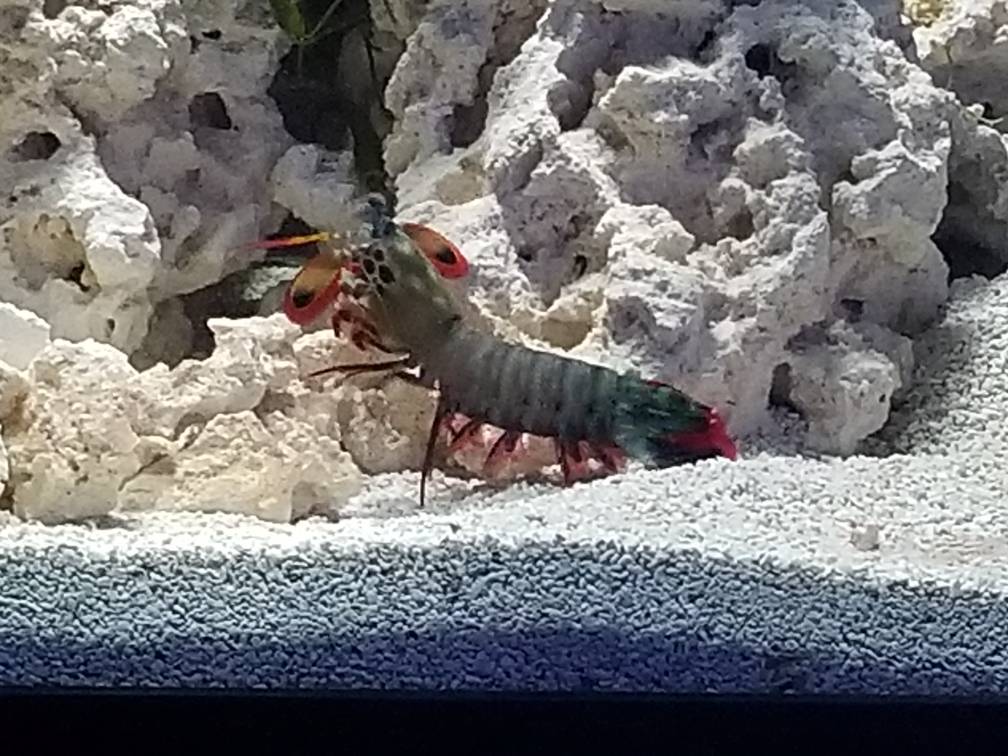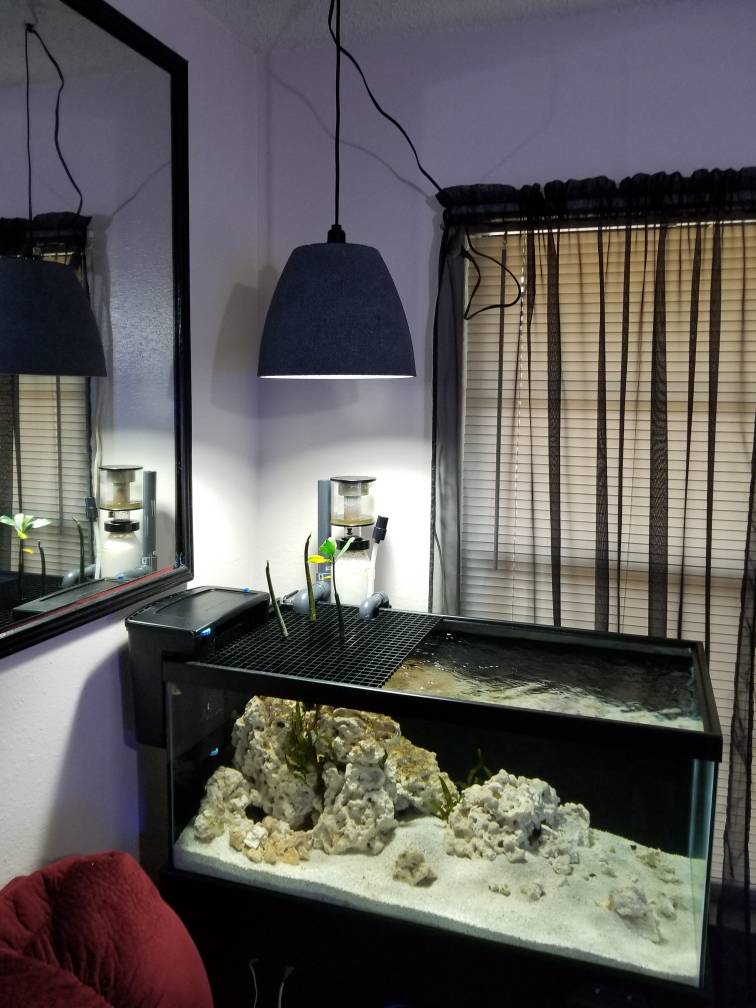- Joined
- Jan 19, 2018
- Messages
- 74
- Reaction score
- 20
Hi guys,
Well, three days ago I was at my LFS and they had a 4" peacock mantis in stock. I had read up on them before and found them super fascinating so I made the impulse purchase. Before purchasing him, I talked to the owner for a while just to make sure I knew what I was getting myself into. He said they don't need much space at all and that it would be just fine in the 10g, HIGHLY lit (flood light), refugium section of my sump. Long story short, I realize how bad strong lighting is and I have since rebuilt my sump so that he now has a 20 gallon area (which I know still might be too small for a full grown adult) with PVC pipe tunneling.
Here are my questions. First, I really liked how much macro algae growth I was getting in my fuge with the flood light. HOWEVER, that will obviously lead to shell rot. What is the best lighting for keeping both my Scyllarus AND macroalgae happy? Is it possible? Can I turn on the flood light for a few hours during the day while my peacock chills in his PVC during that time? Second, in the few days that I have had him, even though he is still eating, his colors have paled a bit. Is it possible that he has already been infected with SR during that time? The lighting was VERY intense. I have since turned off all lighting and he is in complete darkness. I'll attach some pictures so that you can see him/her(?) and the set up. (Pictures of the mantis shrimp are from the first day I purchased it).







 Any advice is appreciated. Thanks in advance for the help!!
Any advice is appreciated. Thanks in advance for the help!!
Well, three days ago I was at my LFS and they had a 4" peacock mantis in stock. I had read up on them before and found them super fascinating so I made the impulse purchase. Before purchasing him, I talked to the owner for a while just to make sure I knew what I was getting myself into. He said they don't need much space at all and that it would be just fine in the 10g, HIGHLY lit (flood light), refugium section of my sump. Long story short, I realize how bad strong lighting is and I have since rebuilt my sump so that he now has a 20 gallon area (which I know still might be too small for a full grown adult) with PVC pipe tunneling.
Here are my questions. First, I really liked how much macro algae growth I was getting in my fuge with the flood light. HOWEVER, that will obviously lead to shell rot. What is the best lighting for keeping both my Scyllarus AND macroalgae happy? Is it possible? Can I turn on the flood light for a few hours during the day while my peacock chills in his PVC during that time? Second, in the few days that I have had him, even though he is still eating, his colors have paled a bit. Is it possible that he has already been infected with SR during that time? The lighting was VERY intense. I have since turned off all lighting and he is in complete darkness. I'll attach some pictures so that you can see him/her(?) and the set up. (Pictures of the mantis shrimp are from the first day I purchased it).

















